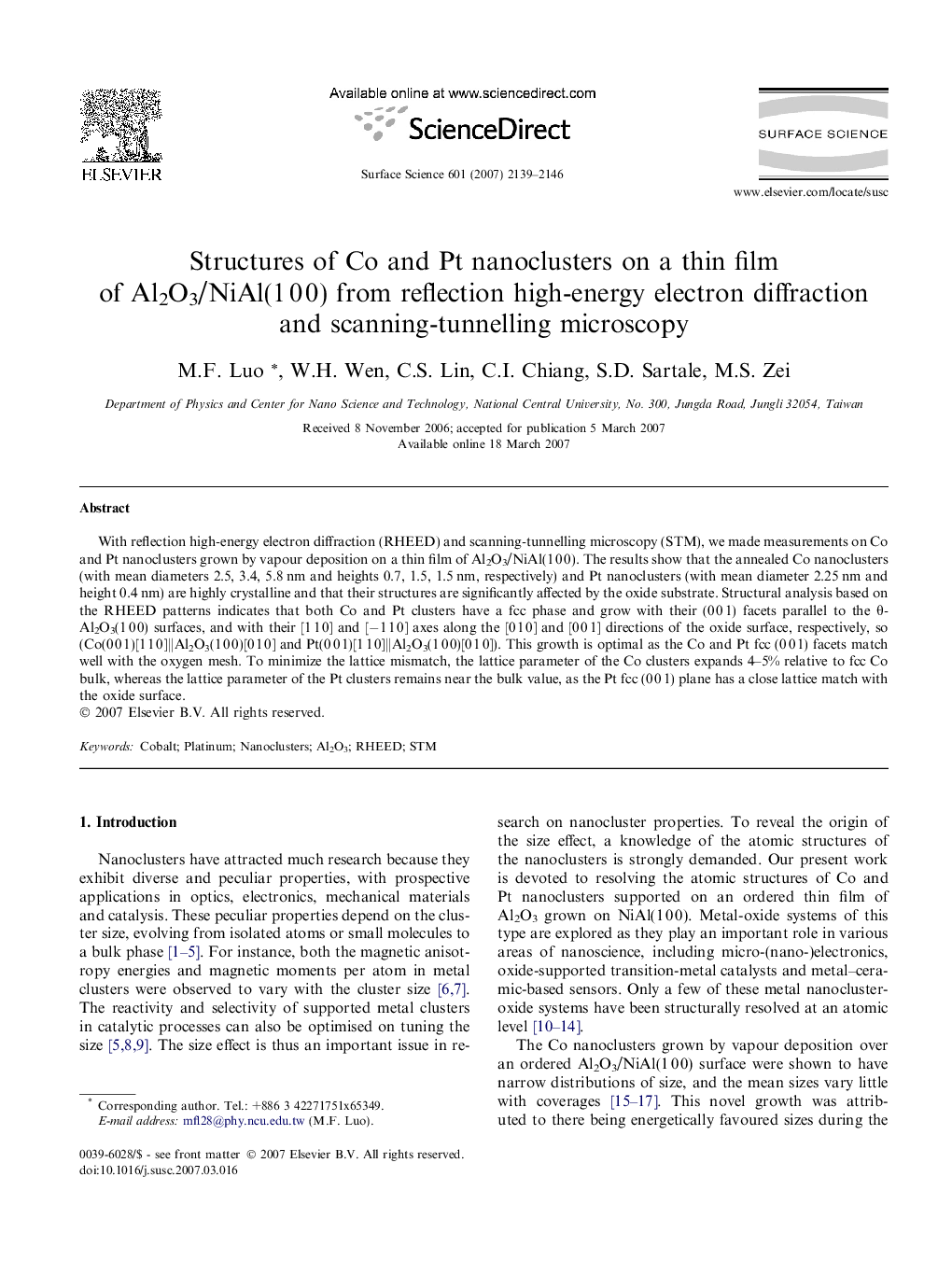| Article ID | Journal | Published Year | Pages | File Type |
|---|---|---|---|---|
| 5425786 | Surface Science | 2007 | 8 Pages |
With reflection high-energy electron diffraction (RHEED) and scanning-tunnelling microscopy (STM), we made measurements on Co and Pt nanoclusters grown by vapour deposition on a thin film of Al2O3/NiAl(1 0 0). The results show that the annealed Co nanoclusters (with mean diameters 2.5, 3.4, 5.8 nm and heights 0.7, 1.5, 1.5 nm, respectively) and Pt nanoclusters (with mean diameter 2.25 nm and height 0.4 nm) are highly crystalline and that their structures are significantly affected by the oxide substrate. Structural analysis based on the RHEED patterns indicates that both Co and Pt clusters have a fcc phase and grow with their (0 0 1) facets parallel to the θ-Al2O3(1 0 0) surfaces, and with their [1 1 0] and [â1 1 0] axes along the [0 1 0] and [0 0 1] directions of the oxide surface, respectively, so (Co(0 0 1)[1 1 0]â¥Al2O3(1 0 0)[0 1 0] and Pt(0 0 1)[1 1 0]â¥Al2O3(1 0 0)[0 1 0]). This growth is optimal as the Co and Pt fcc (0 0 1) facets match well with the oxygen mesh. To minimize the lattice mismatch, the lattice parameter of the Co clusters expands 4-5% relative to fcc Co bulk, whereas the lattice parameter of the Pt clusters remains near the bulk value, as the Pt fcc (0 0 1) plane has a close lattice match with the oxide surface.
